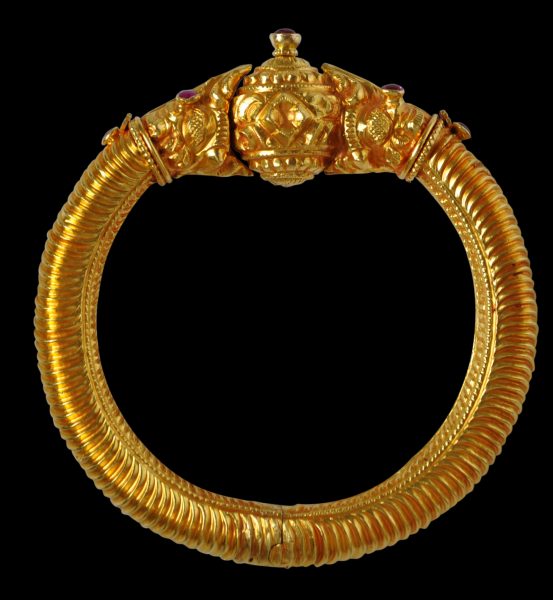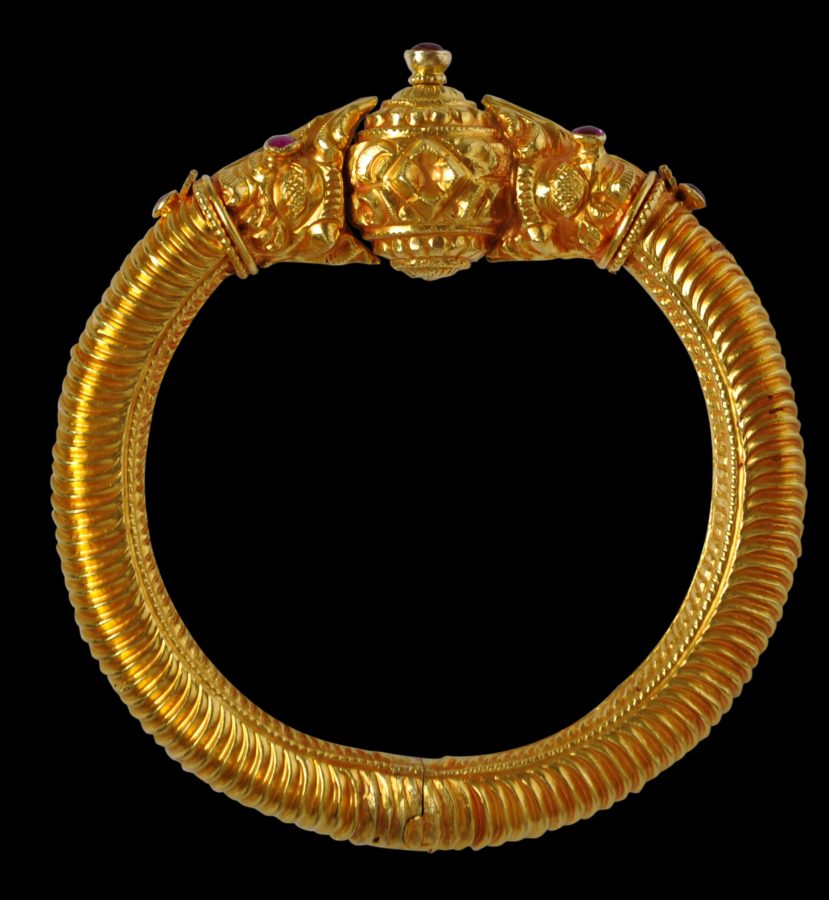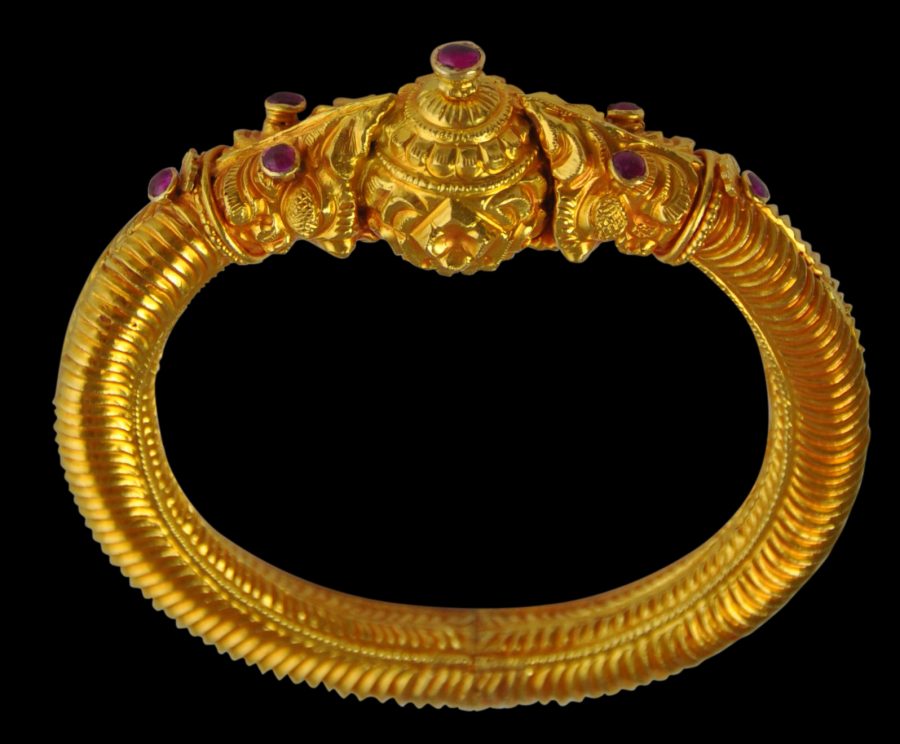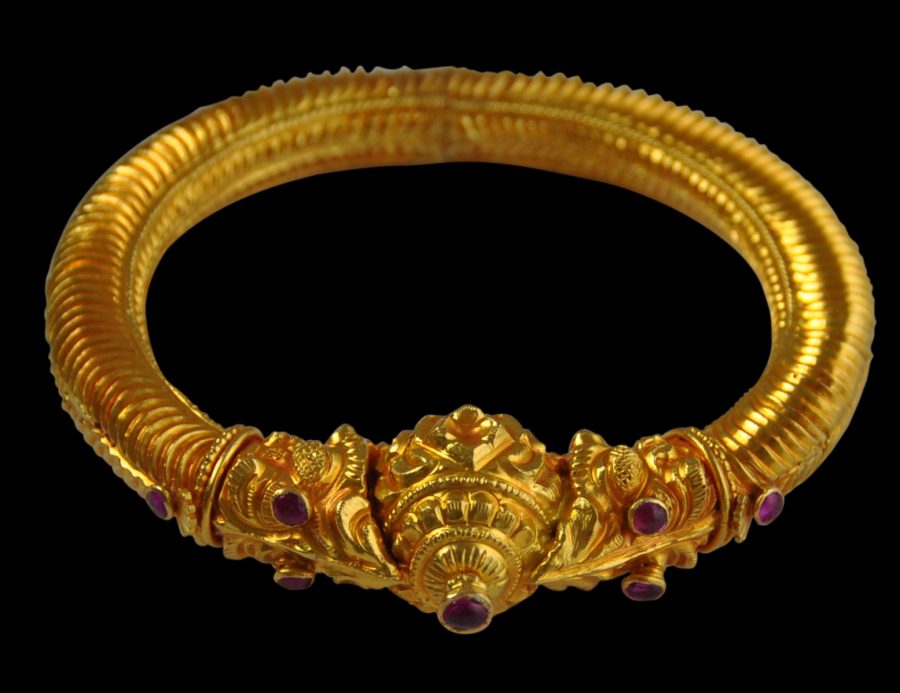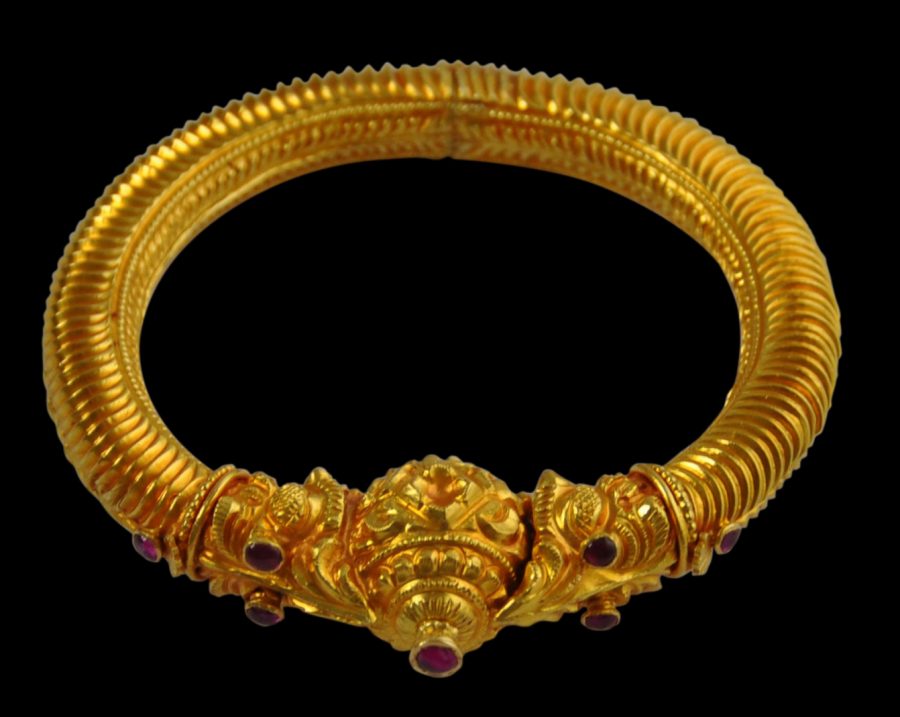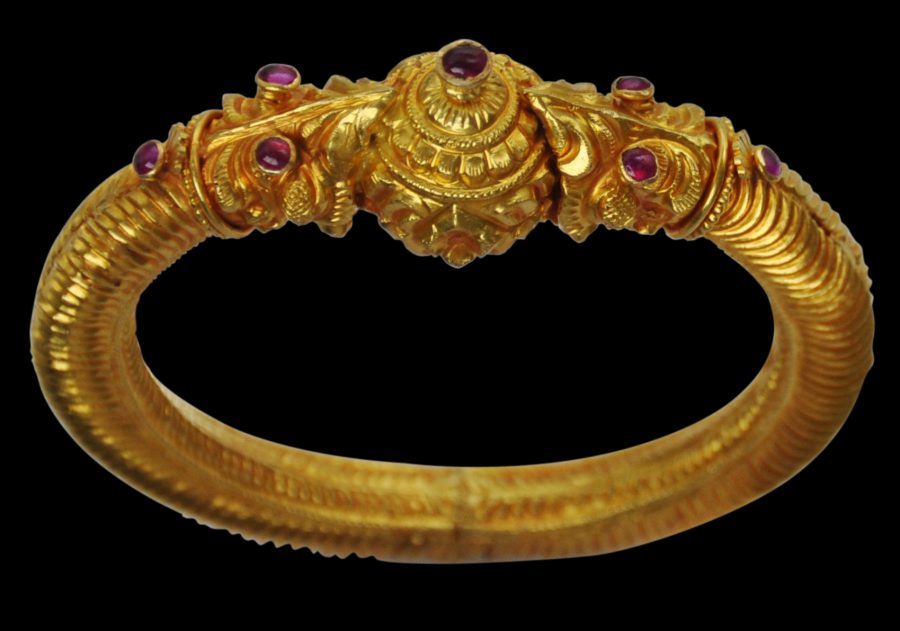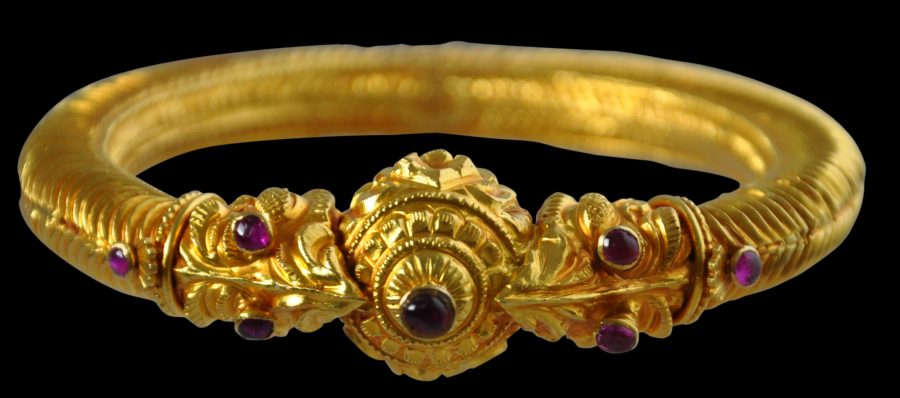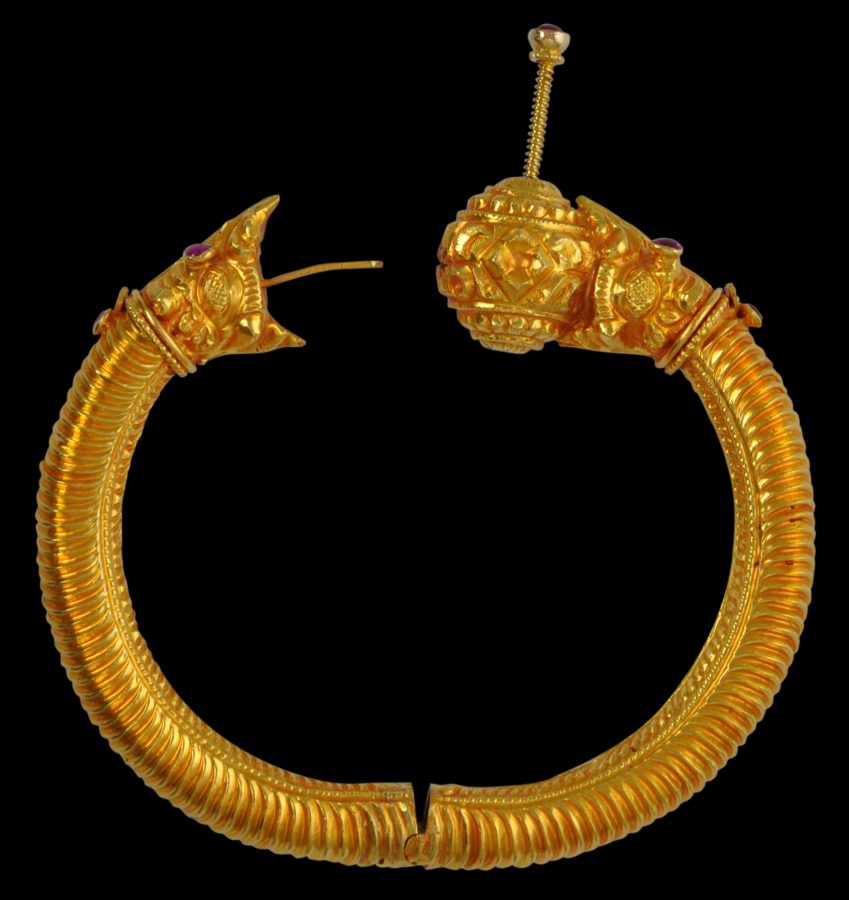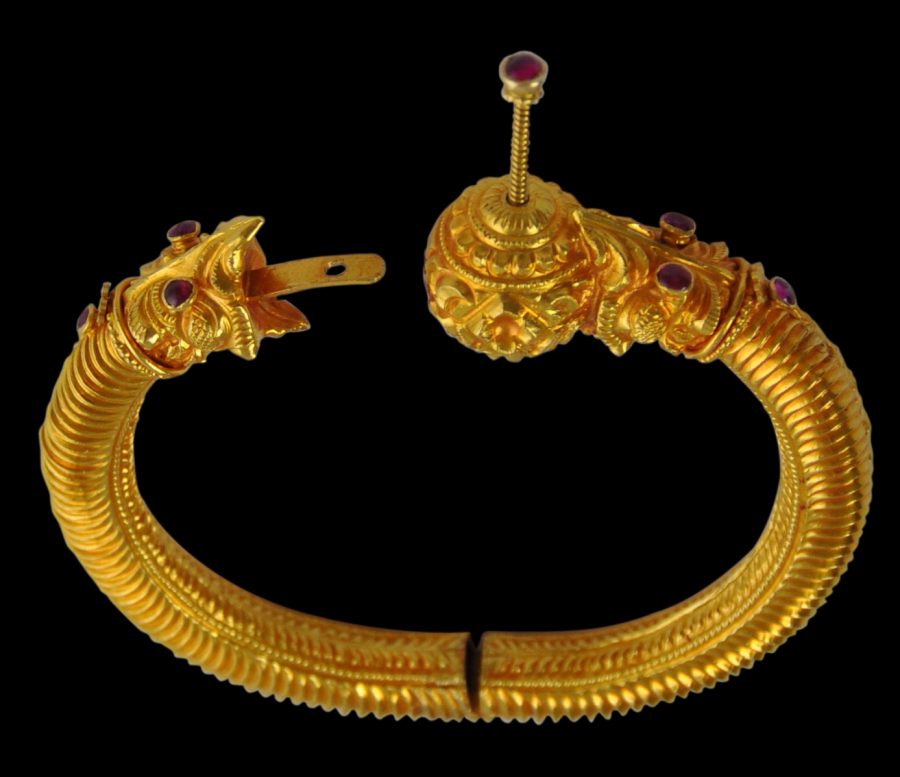This beautiful two-part, hinged gold bracelet is typical of South Indian work, although the ribbing over the hoop suggests that this example might also be the product of goldsmiths operating in Goa. Comprising repoussed and chased gold sheet over a light lac core, it has two fierce makara head terminals. Each has a pair of protruding eyeballs inset with rubies, or some other related stones, in box settings, and another ruby on the neck of each.
Between the makaras, in their gaping mouths, is a magical, spherical jewel decorated in high relief with floral motifs. The jewel is surmounted by a lotus petal finial that holds a screw that keeps the two halves of the bracelet together. The screw is topped by a seventh ruby.
As mentioned, the hoop of the bracelet is decorated all around with thin ribbing to denote the stripy bodies of the makaras. This is an unusual, attractive and tactile addition.
The screwing mechanism that holds the two halves of the bracelet together screws tightly and firmly. It screws anti-clockwise which is more typically associated with eighteenth century Indian thread mechanisms.
Utracht (1997, p.254) illustrates an example in silver, and comments that such bracelets also were made in gold (as in the case of the example here) and that they were given by rajas to their male subjects as a mark of favour.
This example is particularly fine with the attention to detail that has been paid to its construction. There are no dents, losses or repairs. It is stable and wearable.
References
Penalva, L.et al,Espendores do Oriente: Joias de Ouro da Antia Goa/Splendours of the Orient: Gold Jewels from Old Goa, Museu Nacional de Atre Antiga, 2014.
Utracht, O.,Traditional Jewelry of India, Thames & Hudson, 1997


